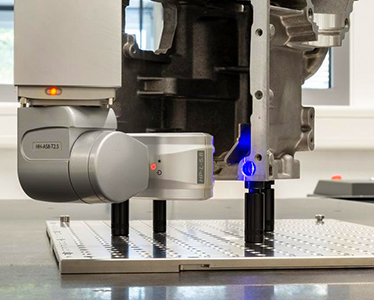Scope of application of closed die forging.
2023-06-12
The development of cold forging technology about Maple machinery is mainly to develop high value-added products and reduce production costs, at the same time, it is constantly penetrating into or replacing the fields of cutting, powder metallurgy, casting, hot forging, sheet metal forming processes, and can also be combined with these processes to form composite processes. Hot forging and cold forging composite plastic forming technology is a new precision metal forming process combining hot forging and cold forging.
It makes full use of the advantages of hot forging and cold forging respectively: good plasticity of metal in hot state, low flow stress, so the main deformation process is completed by hot forging. The precision of cold forging is high, so the important dimensions of the parts are finally shaped by the cold forging process. Hot forging and cold forging composite plastic forming technology appeared in the 1980s, and has been more and more widely used since the 1990s. The parts manufactured by this technology have achieved good results of improving accuracy and reducing cost. 1. Numerical Simulation technology Numerical simulation technology is used to test the rationality of process and mold design.
With the rapid development of computer technology and the development of plastic finite element theory in 1970s, many problems difficult to be solved in plastic forming process can be solved by finite element method. In the field of cold forging forming technology, the stress, strain, die force, die failure and possible defects of forging can be obtained intuitively by finite element numerical simulation technology through modeling and the determination of appropriate boundary conditions.
The acquisition of these important information has important guiding significance for rational mold structure, mold material selection, heat treatment and final determination of forming process. Effective numerical simulation software is based on rigid-plastic finite element method, such as: Deform, Qform, Forge, MSC/Superform, etc. The finite element numerical simulation technology can be used to check the rationality of process and mold design. Deform3DTM software was used to simulate the pre-forging and final forging. The load-stroke curve and the distribution of stress, strain and velocity in the whole forming process were obtained, and the results were compared with those of the traditional upsetting and extrusion process.
The analysis shows that the traditional type of straight tooth cylindrical gear with upsetting-extrusion has large forming load, which is not conducive to the filling of tooth profile. By adopting the new process of pre-forging shunt zone and shunt final forging, the forming load can be greatly reduced, the filling property of the material can be significantly improved, and the gear with full tooth corners can be obtained. The forming process of gear cold precision forging was simulated by using 3D large deformation elastoplastic finite element method.
The deformation flow of the two-step forming mode with closed die forging as pre-forging and closed die forging with hole flow and constrained flow as final forging was analyzed. The results of numerical analysis and process tests show that it is very effective to reduce the working load and improve the corner filling capacity to adopt the splitter, especially the splitter of the constrained hole. 2, intelligent design technology Intelligent design technology and its application in cold forging forming process and mold design.
The US Columbus Bettel Laboratory developed a knowledge-based pre-forging geometry design system. Because the shape of the pre-forging is space geometry, it is necessary to operate its geometry, so it can not simply describe the reasoning process with general language. For the geometric information of the parts, the frame method is used to express, and different slots are used in the frame to define the basic components of the parts and the topological relationship between them.
The design rules are represented by production rules, with an OPS tool for mockery. The application of knowledge design method in cold forging forming process and die design will completely change the traditional state of plastic forming which depends on the experience of designers, repeated modification in the design process and low design efficiency. It uses artificial intelligence, pattern recognition, machine learning and other technologies to extract appropriate knowledge from the system knowledge base in the design process to guide the cold forging forming process and mold design. The technology is being further developed. Knowledge-based design method has become a characteristic subject in the research of forging forming process and intelligent technology of die design..























































